CHAPTER 2
BEFORE YOU BEGIN
This chapter considers the plans you may need to make before giving an Ayurvedic head massage, in order to prepare your space and yourself. You will learn about the various types of strokes used in a head massage, and ways to make the giver and receiver most comfortable.
WHEREVER YOU STAND, BE THE SOUL OF THAT PLACE.
Rumi
PRACTICAL PREPARATIONS
Make sure you have everything prepared before you begin a head massage ritual. Whether you are giving care to yourself or caring for others, the receiver should be comfortable and relaxed, and the provider, in the right frame of mind.
A good time
Choose a time when you will be completely free from distractions and can commit to relaxation and focus.
A good place
You will need a sturdy, upright chair without arms, positioned in an uncluttered space. You want the space to be clean and organized, and free from distractions.
Have some extra cushions on hand, since you might need to raise the receiver’s seated position for your own comfort while massaging, and a large towel to use as a neck support (see here).
The space will need to be warm, which may mean employing an additional heat source during the colder months, or an electric fan for hotter climates.
The lighting should be calm and cozy, so dim the lights if you can or use lamps. You might also choose to play soothing music.
Personal considerations
Wear clean clothes with short sleeves and comfortable shoes, and avoid wearing any heavy perfumes or scents. If you have long hair, tie it back to keep it out of the way.
Make sure you breath is fresh, and trim and file your fingernails to avoid accidentally scratching the receiver—even if that is yourself! Remove your rings, watches, and bracelets, and wash your hands before and after each massage.
Supplies at the ready
If you are using one of my herbal hair oils (see here), make sure you have it close at hand. Here’s a handy list of other supplies you might choose to use:
- Large towel or blanket to protect the floor
- Hand sanitizer to use before you start
- Another large towel, or hairdressing cape, to protect the receiver’s clothing
- An apron to protect the giver’s clothing
- Essential oils and an aromatherapy diffuser
- A butterfly hair clip to pin back long hair
- Microfiber hair towel or shower cap for after the ritual
- Paper towels
- Clock
PREPARING YOUR BODY AND MIND
Begin each head massage treatment by setting the intention that your ritual is to serve the highest good of the receiver. Always give the receiver your undivided attention, and avoid any distractions during the massage. If you are massaging yourself, the same rules apply. Focus your attention on your goal for the session.
The exercises detailed can be used to focus your mind, wake up your muscles, release tension, and prevent against injury.
GROUND AND CENTER
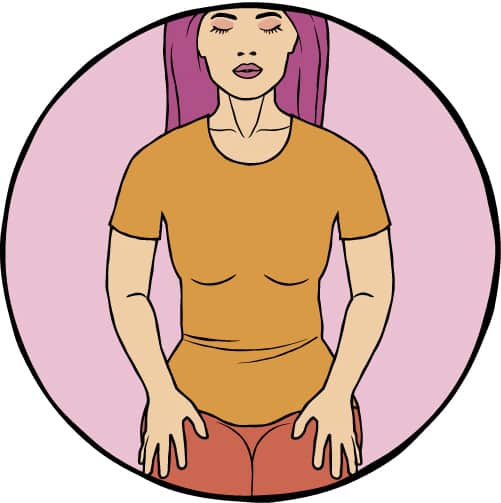
Bring your attention to the moment by sitting or standing with your feet planted firmly on the ground. Close your eyes or soften your gaze while you take a few deep breaths. Notice any sensations or sounds. Focus on feelings of tension in your body. Visualize your stress melting down through your entire body, through the soles of your feet, and out into the earth. When it feels right to do so, open your eyes. You should feel more focused, relaxed, and clear-headed.
SHOULDER ROLL
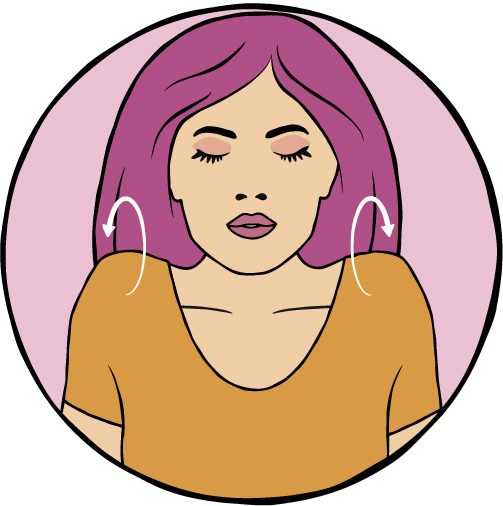
Standing straight with your arms by your side, slowly rotate your shoulders backward, making small circles. Repeat the movement by switching the direction to forward circles.
FOREARM STRETCHES
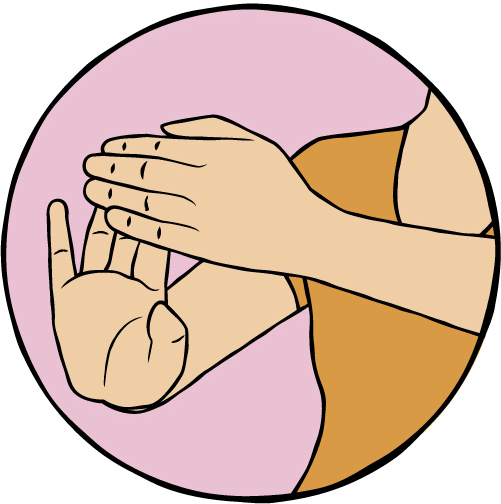
Extend your arm out with the palm and fingers facing down. Use your opposite hand to gently pull the extended hand backward toward your forearm. Hold the stretch for up to 30 seconds, then change arms and repeat.
WRIST CIRCLES
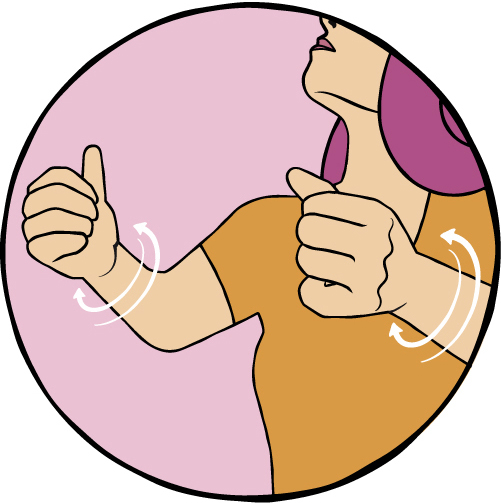
Extend both arms out and make a loose fist with each hand. Rotate your wrists ten times in slow, counterclockwise circles. Repeat in the opposite direction to make ten clockwise circles.
THUMB AND FINGER STRETCH
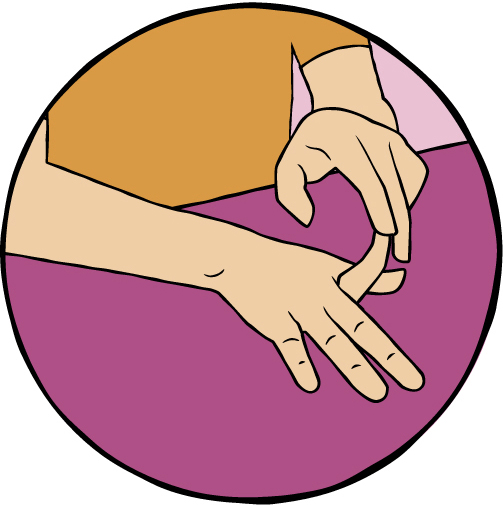
Place your hand with the palm facing down on a flat surface. One at a time, gently stretch each finger and thumb backward toward your wrist. Try not to force them farther than feels comfortable. Change hands and repeat.
PROPS, SUPPORTS, AND BRACING
Ayurvedic head massage requires very little equipment, and is typically done best in a sturdy, upright chair, without arms. For some of the techniques described in the rituals you will need to ensure your receiver has extra support, using the techniques described here.
STRADDLE CHAIR
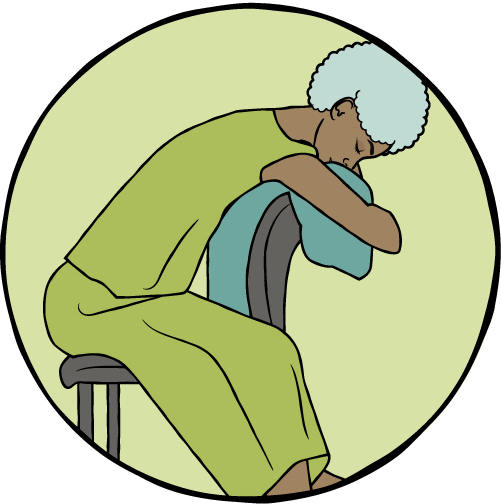
The receiver will usually sit in the chair facing out, but may find it more comfortable to sit facing the back of the chair instead. Place a large cushion between them and the chair back, covered with a towel for protection if you are using hair oil.
ROLLED TOWEL
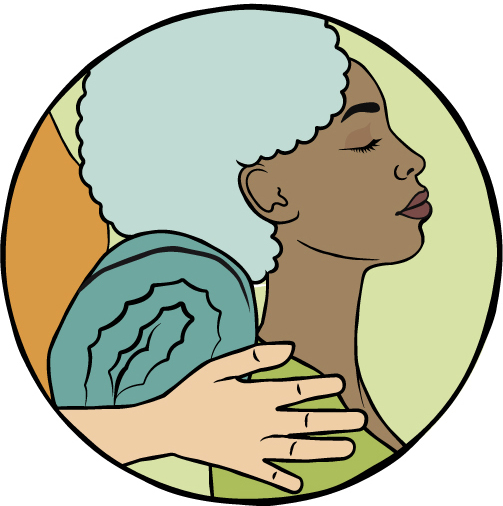
Create a comfortable place for the receiver’s head to rest during compressions, shampooing, and frictions by using a rolled-up towel. Place the rolled towel on your chest or belly and encourage the receiver to lean back onto it, so they don’t strain their neck muscles during the massage.
BRACING: FOREHEAD
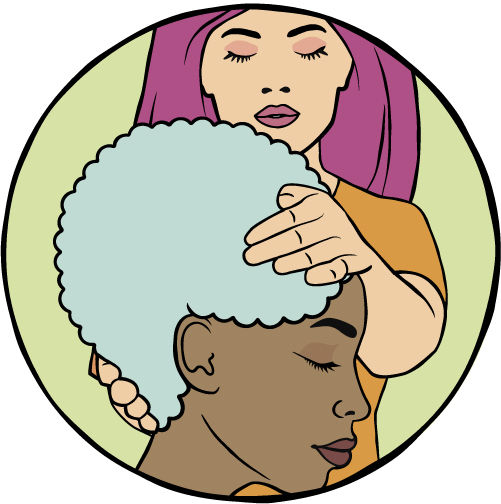
Use the forehead bracing technique to give the receiver support while applying strong strokes to the back of the neck. Stand to the receiver’s left shoulder and cup their forehead in your left hand. Tilt their head forward slightly to rest in the palm of your hand. If you’re left-handed, stand to your partner’s right shoulder and use your right hand for support while you work with your left.
BRACING: NECK
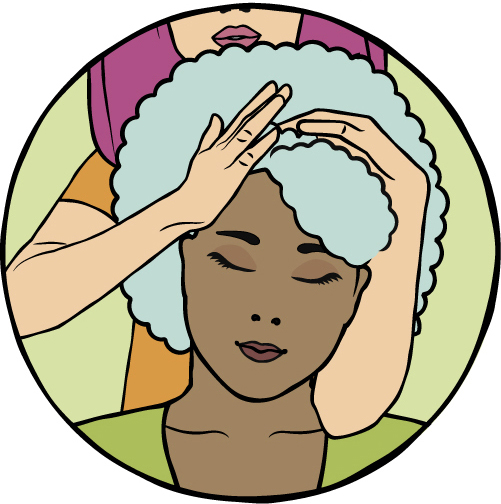
You can use this support technique while doing frictions and shampooing. Stand behind the receiver. Bend your left arm at the elbow and place your upper arm on the receiver’s left shoulder. Lightly lean their head into the palm of your left hand to offer support while working on the right side. Switch the bracing technique to the receiver’s right shoulder and head, using your right arm and hand, when working on the left side.
MASSAGE MOVEMENTS
With an Ayurvedic head massage we repeatedly use particular types of movement, known as massage strokes.
EFFLEURAGE
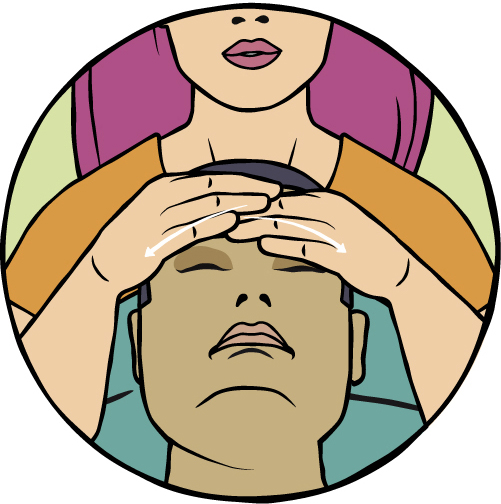
OIL APPLICATION, STROKING, HAND SWEEPING
This movement is slow, light, and rhythmic. The strokes are long and gliding, using the palms, fingers, knuckles, and forearms.
Effleurage decreases the sympathetic nervous system response, reducing muscle tension and pain.
Use effleurage to introduce your touch, apply oil, and explore the terrain before moving on to more in-depth massage techniques, and to end your massage.
PETRISSAGE
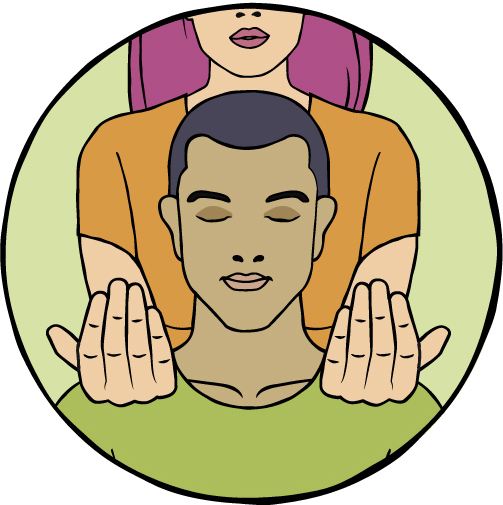
SHAMPOOING, RUFFLING, SQUEEZING, LIFTING, PINCHING, PUSHING, PULLING, ROLLING, IRONING
Petrissage means to knead. The movement uses more substantial pressure than effleurage, and involves picking up tissue. It uses the palms, fingertips, thumbs, and forearms.
FRICTIONS
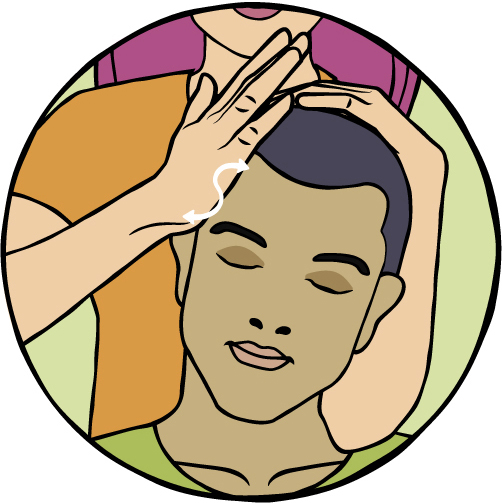
WINDSHIELD WIPER, HAIRLINE ZIGZAGS, TUGGING, SHEARING
Friction requires heavy pressure and focuses on moving the skin over the bones.
RUBS
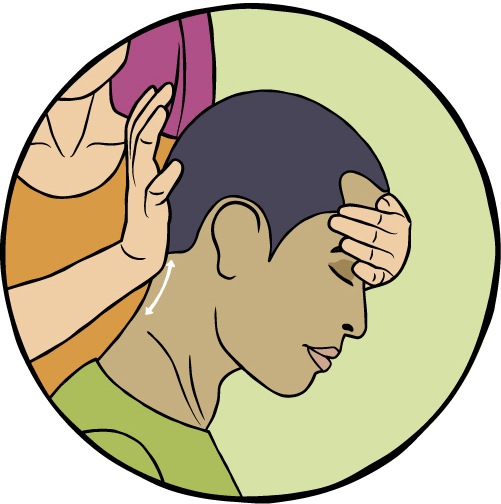
BASE OF THE SKULL RUB
A rub is a superficial movement that concentrates on rubbing over the surface of the skin.
TAPOTEMENT
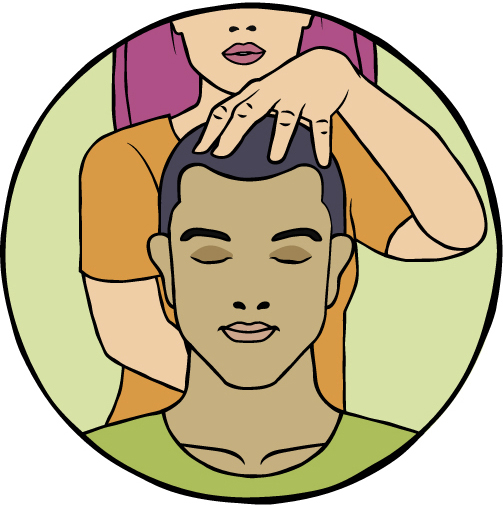
TABLA TAPPING, CHAMPI
Tapotement means to drum, strike, and tap tissues. This technique increases local circulation, wakes up muscles, and relieves general fatigue.